- Table of contents
1. Install Planio Storage
Within any project, install Planio Storage by navigating to the Apps tab. Depending on your current Planio plan, you might have to add Planio Storage for a small monthly fee. Of course, you'll be able to try Planio Storage for free until your next plan renewal.
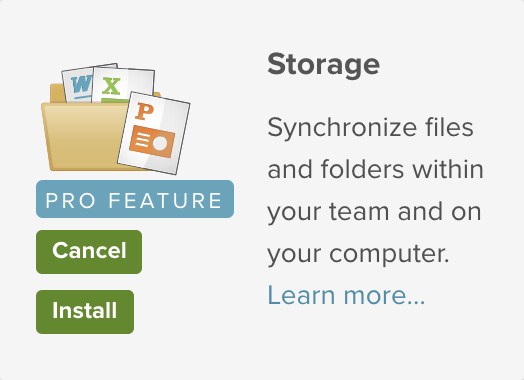
2. Install the Sync Client
To sync your project's files and folders with your computer, download the appropriate client app first.
 |  |  |
| macOS Download (Version 2.6.3) | Windows Download (Version 2.6.3) | Linux Download (Version 2.3.4) |
Next, run the installer and enter your Planio domain, login and password. Planio Storage will allow you to sync everything from your Planio account or just the projects you select.
You can also specify the local folder where Planio Storage files should be placed.
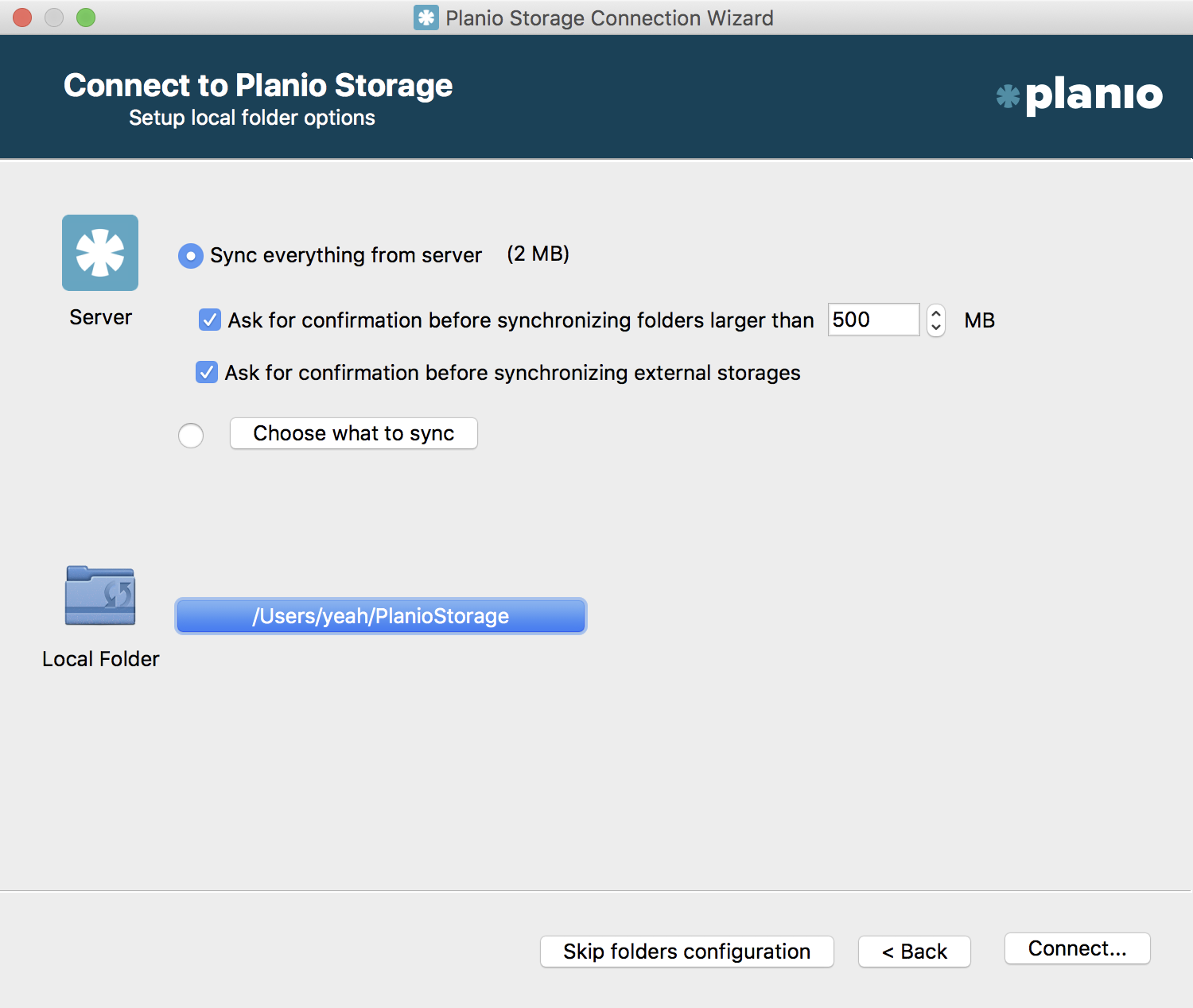
Handling files and folders inside the synced folders works like you're used to and every change will be synced with Planio. Should you be offline during a change, the sync will happen the next time your device is connected to the Internet.
In case you and a colleague edit the same file while offline or during syncs, Planio Storage will create a copy of the file and you'll be able to merge your changes.
3. Browser access
You can manage files and folders right in Planio as well. Within your project, navigate to the Storage tab. Inside, you'll be able to upload any number of files from your computer by clicking on the Upload files button or simply by dragging them from your desktop into the browser window.
You can also create folders as you would on your computer by clicking New folder.
To visualize the files and folders in Planio Storage, you can either select Tree or Grid from the options menu at the top right.

4. WebDAV access
In case you don't wish to synchronize everything but access Planio Storage directly while online, you can use WebDAV.
You can find a project's WebDAV URL in the Storage section's sidebar on the right. To connect, simply use your Planio login and password.
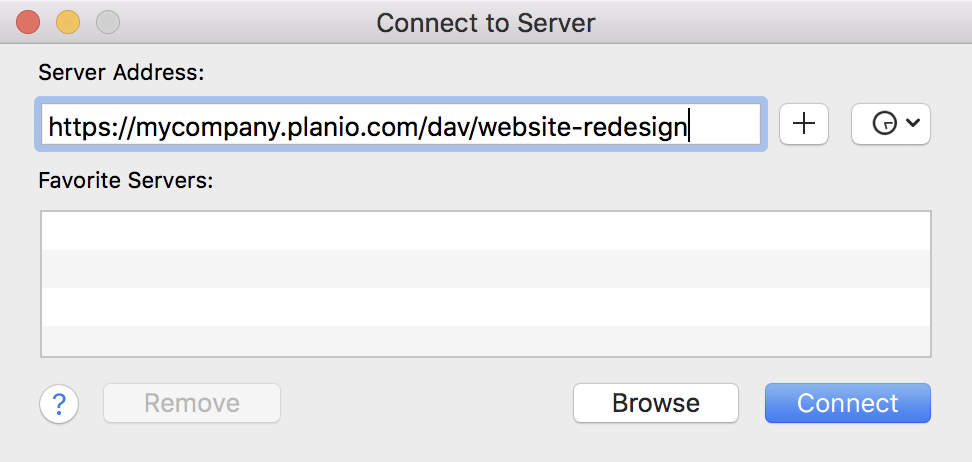
5. Configure roles and permissions
To configure who among your colleagues and clients should be able to view and edit files, head to your avatar → Administration → Roles and Permissions. Then, select a role. Within Permissions → Storage, you'll be able to set permissions for the selected role.

The following permissions are available:
| View files and folders | Enables users to access the Storage tab and browse files. |
| Edit files and folders | Lets users upload, edit, and delete files. |
| Edit protected files and folders | Enables users to protect files and folders. Protected items are hidden from other users unless they have the View protected files and folders permission. |
| View protected files and folders | Allows users to view and download protected files. They cannot edit, delete, or set files to unprotected. |
| Share files | Allows users to generate a sharing link for any file. |
| View shared files | Allows users to download files shared using a sharing link. |
6. Protecting files and folders
Files and folders can be protected and thus hidden from other users. To protect a folder or file, click on the ... menu or right click the item. Then, select Protect.
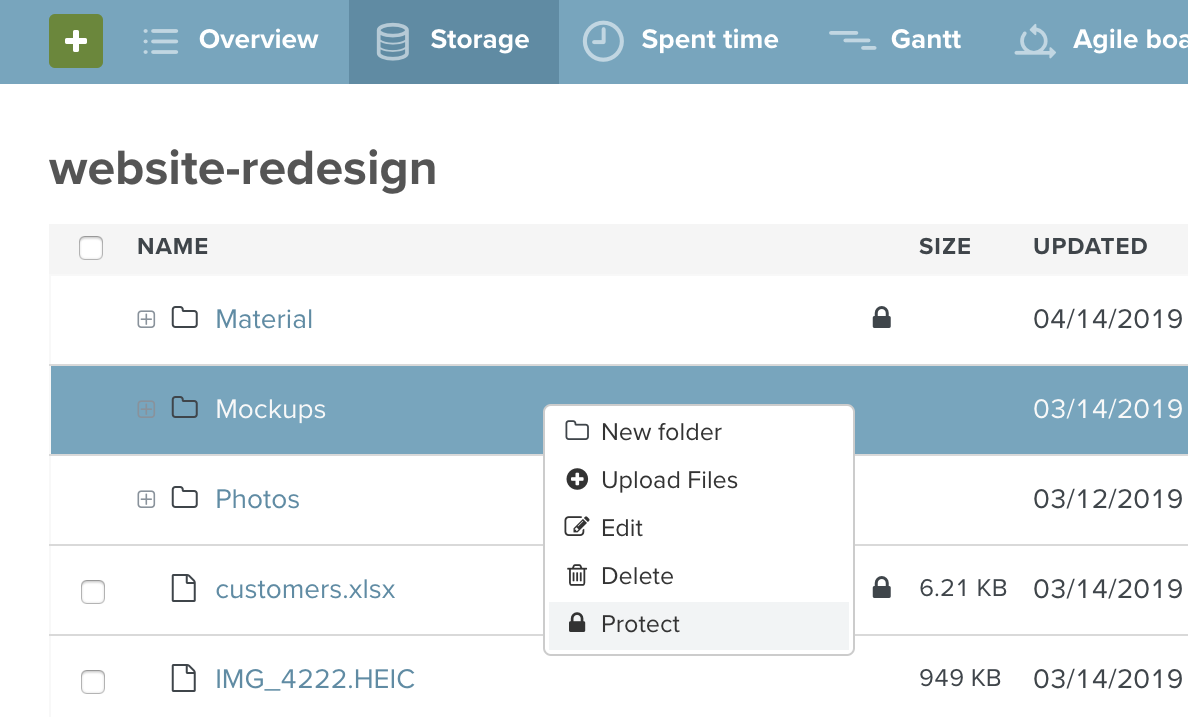
Protected files and folders are hidden from users who do not have the View protected files and folders permission. Users who do have the permission can view and download protected items, but they cannot edit or delete them.
To edit, delete, or unprotect protected files and folders, users need the Edit protected files and folders permission.
7. Sharing files
Single files can be shared with people outside of the project by generating a Sharing link. This is useful if you'd like to link to the file publicly or send a link to it in an email.
To share a file, click on the ... menu or right click the item. Then, select Share. You'll be able to copy the sharing link in the next step.
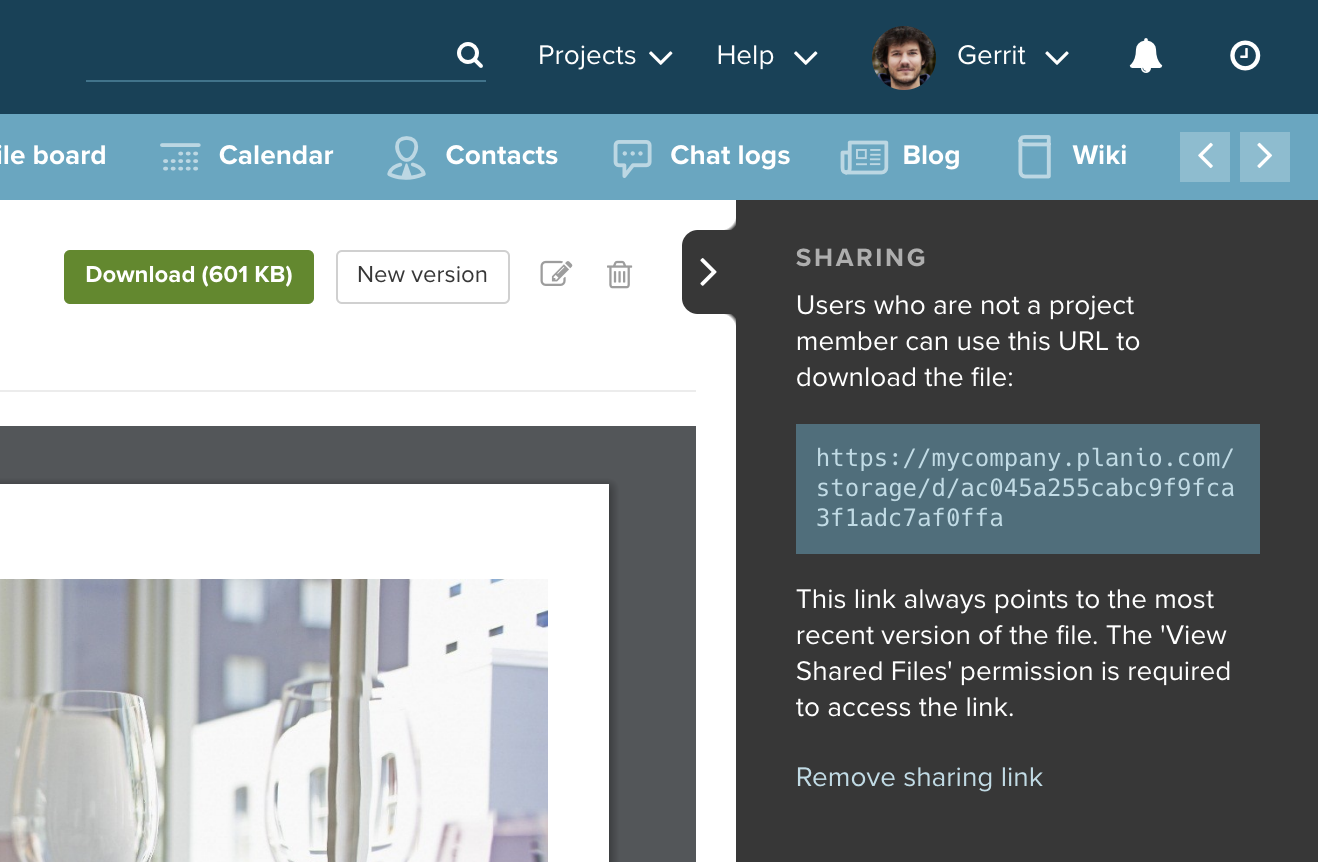
The link will always point to the latest version of the file–even if it has been updated after it was shared.
Sharing links can be accessed by anyone who has the View shared files permission. By configuring your Non-member and Anonymous roles, you can define if that extends to everyone who has an account in your Planio or even to people who are not logged in. Our guide Make Redmine Projects Public on Planio has more information about this.
8. Linking files
You can create links in Planio Storage which point to files in different folders or even projects of your Planio account.
To create a link, click on the ... menu or right click the item. Then, select Create link. In the popup that appears, select the project and folder where the link should be created.
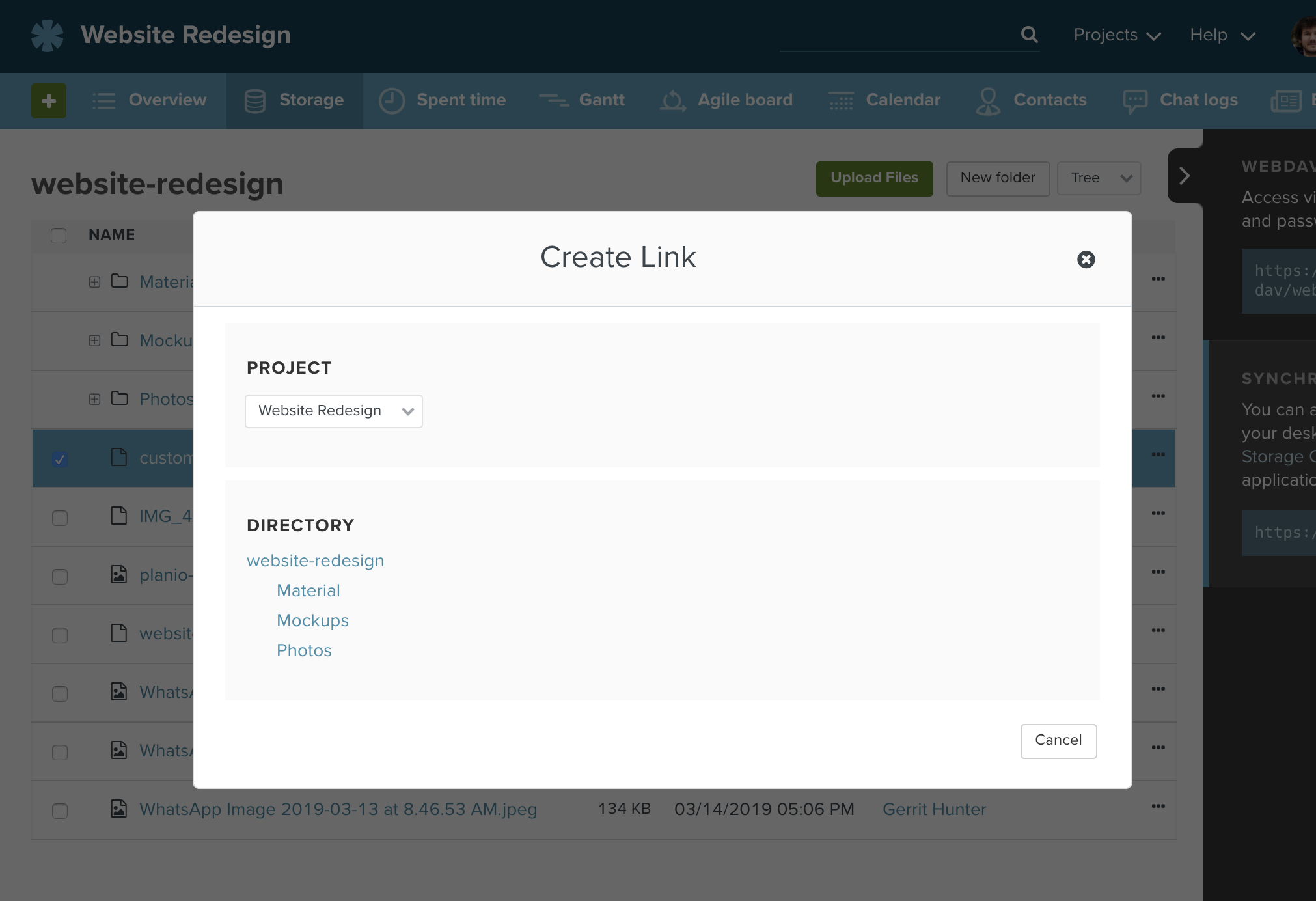
Links will always point to the latest version of the source file. If a source file is deleted, all links will disappear as well.
Users will always require permissions to view the source file as well in order to be able to view the link.
9. Handling conflicts
The Planio Storage desktop client uploads local changes and downloads remote changes. When a file has changed both in your local folder and on the Planio server between two synchronization runs, the client will be unable to resolve the situation on its own. Therefore, it will create a conflict file which contains your local version, download the remote version from Planio, and notify you that a conflict has occurred which needs attention.
Example
Imagine there is a file called hello.txt in your synchronized folder. It has not changed for a while and contains the text "hello" both on your PC and remotely, on the Planio server. Now, nearly at the same time you update this file to say "local hello", the file on the Planio server gets updated to contain "planio hello" by someone else.
When attempting to upload your local changes, the desktop client will notice that the server version also has changed. It therefore stops the upload (since it would potentially overwrite somebody elses changes) and instead creates a conflict file holding your local changes. You will now have two files on your local machine:
-
hello.txtcontaining "planio hello" -
hello (conflicted copy 2020-06-03 012755).txtcontaining "local hello"
As you can see, the file hello.txt represents the file as it is currently on the Planio server - it has the remote changes (and will continue to be updated with further remote changes when they happen), but your local adjustments have not been uploaded to the server. Instead, the conflicted copy file holds your local adjustments now.
The desktop client notifies you about this situation via system notifications, the system tray icon and a yellow unresolved conflicts badge in the account settings window. Clicking this badge shows a list that includes the unresolved conflicts and clicking any one of them opens an explorer window pointing at the relevant file.
To resolve such a conflict, open both files, compare the differences and copy your local changes from the conflicted copy file into the original file where applicable. In this example you might change hello.txt to say "local and planio hello" and delete the file with conflicted copy in its name. With that, the conflict is resolved.
No credit card required. Sign up only takes 60 seconds.